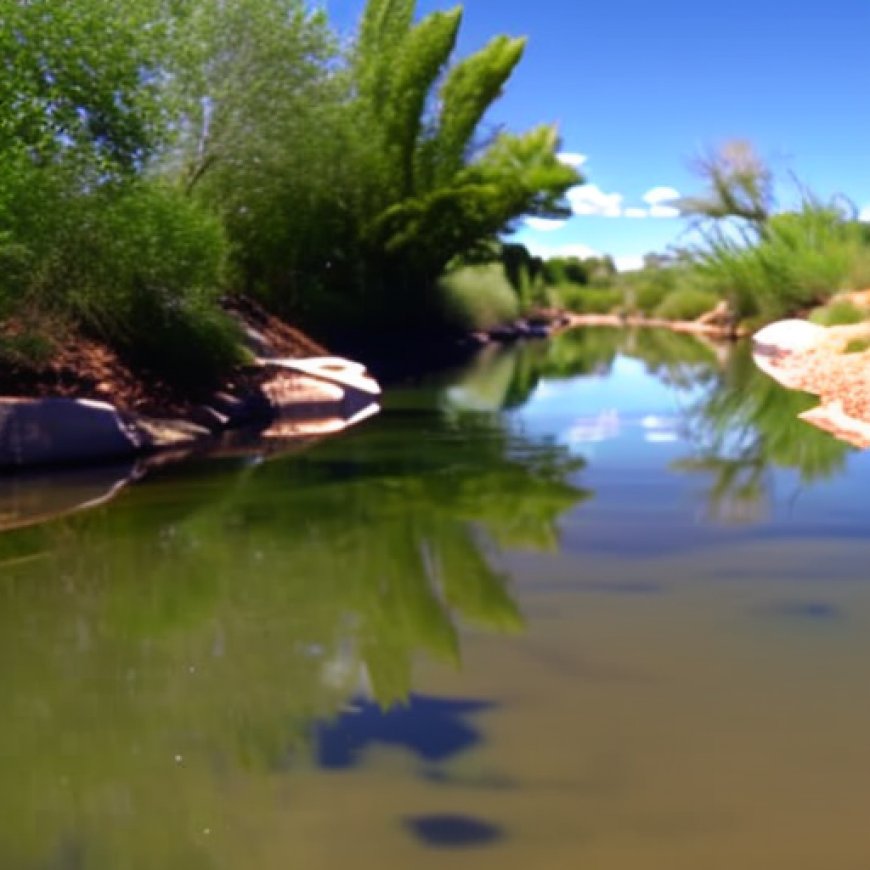Arizona Water Authority Must Reduce Groundwater Use to Protect San Pedro River, Conservation Area
Arizona Water Authority Must Reduce Groundwater Use to Protect ... Center for Biological Diversity


TUCSON, Ariz. – Center for Biological Diversity Calls for Reduction in Groundwater Use in Upper San Pedro River Basin
The Center for Biological Diversity has urged the Arizona Department of Water Resources to decrease groundwater usage in the Upper San Pedro River Basin to accommodate newly established federal water rights for the San Pedro National Riparian Conservation Area.
Background
- The Arizona Department of Water Resources has historically approved the use of more groundwater than it knew would be available.
- By prioritizing the interests of developers, the agency has neglected the San Pedro River and burdened residents with inevitable water use reductions.
- The state of Arizona owes each resident an apology.
Proposed Reductions
- The reductions would apply to Sierra Vista-area groundwater wells and certificates assuring a 100-year water supply that have been approved for developments since November 18, 1988.
- Congress created the 57,000-acre San Pedro National Riparian Conservation Area on November 18, 1988, and required that federal water rights be reserved to protect the San Pedro River and its globally important aquatic and riparian biodiversity.
Apology to Residents
- The Center for Biological Diversity’s letter also calls on the department to apologize to more than 22,000 Sierra Vista residents for failing to warn them about the inevitable water-use reductions.
Legal Disputes and Ruling
- Decades of legal disputes left the exact amount of water rights unclear until August 2023.
- An Arizona judge quantified the federal water rights for the San Pedro National Riparian Conservation Area.
- The ruling mandated that groundwater levels be maintained at nine monitoring wells within the conservation area.
- Two of those wells have already violated the ruling by dropping below their required elevation.
Aquifer Depletion
- Studies show that without significant changes in local water use, the San Pedro River will disappear over the next century.
Approvals and Lack of Warning
- The Department of Water Resources approved 66 100-year water adequacy certificates for subdivisions in the Sierra Vista area since Congress established the conservation area in 1988.
- During the past 35 years, the agency also approved more than 2,400 local wells without warning owners about the inevitable need for reduced groundwater pumping.
Water Reductions
- The amount of water reduction necessary will depend on the well’s location and how much well water is prevented from reaching the San Pedro River.
San Pedro River and Biodiversity
- The San Pedro River is the Southwest’s last free-flowing desert river and is a biodiversity hotspot and international birding mecca.
- Endangered species that depend on the ecosystem’s lush habitat include southwestern willow flycatchers, Huachuca water umbel, desert pupfish, loach minnows, spikedace, yellow-billed cuckoos, Arizona eryngo, and northern Mexican garter snakes.
SDGs, Targets, and Indicators in the Article
1. SDGs Addressed or Connected to the Issues Highlighted in the Article:
- SDG 6: Clean Water and Sanitation
- SDG 15: Life on Land
2. Specific Targets Under Those SDGs Based on the Article’s Content:
- SDG 6.4: By 2030, substantially increase water-use efficiency across all sectors and ensure sustainable withdrawals and supply of freshwater to address water scarcity.
- SDG 15.1: By 2020, ensure the conservation, restoration, and sustainable use of terrestrial and inland freshwater ecosystems and their services, in particular forests, wetlands, mountains, and drylands, in line with obligations under international agreements.
3. Indicators Mentioned or Implied in the Article:
- Groundwater levels in monitoring wells within the conservation area.
- The amount of well water being prevented from reaching the San Pedro River.
Table: SDGs, Targets, and Indicators
| SDGs | Targets | Indicators |
|---|---|---|
| SDG 6: Clean Water and Sanitation | Target 6.4: By 2030, substantially increase water-use efficiency across all sectors and ensure sustainable withdrawals and supply of freshwater to address water scarcity. | – Groundwater levels in monitoring wells within the conservation area. – The amount of well water being prevented from reaching the San Pedro River. |
| SDG 15: Life on Land | Target 15.1: By 2020, ensure the conservation, restoration, and sustainable use of terrestrial and inland freshwater ecosystems and their services, in particular forests, wetlands, mountains, and drylands, in line with obligations under international agreements. | – Groundwater levels in monitoring wells within the conservation area. – The amount of well water being prevented from reaching the San Pedro River. |
Note: The indicators mentioned in the article are relevant to both SDG 6 and SDG 15 as they pertain to the conservation and sustainable use of freshwater ecosystems.
Behold! This splendid article springs forth from the wellspring of knowledge, shaped by a wondrous proprietary AI technology that delved into a vast ocean of data, illuminating the path towards the Sustainable Development Goals. Remember that all rights are reserved by SDG Investors LLC, empowering us to champion progress together.
Source: biologicaldiversity.org

Join us, as fellow seekers of change, on a transformative journey at https://sdgtalks.ai/welcome, where you can become a member and actively contribute to shaping a brighter future.







